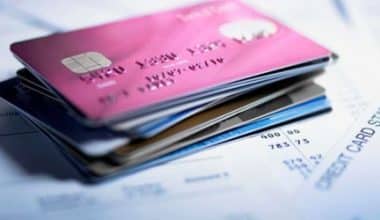A data breach can have serious effects on both businesses and individuals. It could change your life and the way you run your business. No one benefits when private, sensitive information about their business or personal life is made public.
With hackers looking for ways to gain information, not paying enough attention to security details can cause a breach. To safeguard your information, learn more about a data breach, how to prevent it, examples, consequences, and accidental breaches.
Data Breach
A data breach happens whenever information is taken from or stolen from a system without the owner’s knowledge or permission. This can happen if someone breaks into a system or takes information directly from it.
Some private, proprietary, or secret information may be taken in a data breach. Credit card information, customer information, trade secrets, and even matters pertaining to national security are potential things that can be breached.
What Are the Three Kinds of Data Breaches?
Familiarity with different data breaches is necessary to protect your business and personal information. The following are the three kinds of data breaches:
#1. Breach of Confidentiality
This happens whenever data or private information is disclosed to a third party without the data owner’s consent. This can happen intentionally, accidentally, or as a result of theft. The data owner can take legal action for potential losses or damage resulting from the breach of confidentiality.
#2. Data Alteration
This happens when there is an unauthorized or accidental alteration of personal data. For example, hackers might target a company database to erase files or disrupt processes
#3. Data Loss or Destruction
A breach of this kind occurs whenever there is a loss of access to or destruction of personal data caused by an accident or by someone else without their permission.
Methods of Breaching Data
The vast majority of data breaches are brought about by malicious software or attempts to hack into systems. The following are some examples of additional breach methods that are regularly seen:
- A trusted employee or executive member with access privileges stealing data is an insider leak.
- Unintentional disclosure occurs when private information is made public due to errors or ignorance.
- Fraud involving payment cards typically involves using actual skimming devices, which steal payment card data.
- In a few instances, the actual method of the data breach is either unknown or has not been reported.
- Some of the company’s tangible assets were either misplaced or stolen, including portable drives, laptops, office computers, files, and other items.
What is Targeted in Data Breaching
There is a greater chance that data will be targeted if there’s a financial benefit to derive from it. Therefore, most data breaches will target the following:
- The organization’s intellectual property, which consists of innovations, formulas, manuals, and any confidential data the organization may have.
- Information regarding the competition, such as market research and business strategy.
- Any information that can be used to identify a person, such as a social security number, a birth date, or contact information for the person ( that is personally identifiable information )
- All information pertaining to a person’s financial situation, such as, but not limited to, credit card numbers, bank account information, and investment specifics.
- Information on one’s health, such as one’s medical history.
A small business can also be targeted in a data breach to access bigger organizations they are vendors for, with one of the examples of such cases being the Equifax data breach.
What Does a Data Breach Cause?
Data breaches are caused by the actions of cybercriminals, who can be firm employees or individuals from the outside world. Sometimes, personnel have access to information but utilize it in unauthorized and destructive ways.
Consequences of Data Breach
A breach of a company’s data security can have severe consequences. It can harm a company’s reputation, result in the loss of customers, damage and corrupt databases, and have repercussions regarding legal and regulatory compliance.
Also, individuals can suffer an invasion of privacy, and their identities can be stolen if their data is breached.
#1. Loss of productivity
A data breach often requires a halt in operations to identify and fix the vulnerability, which can take time and lead to financial losses. Large companies can lose thousands of dollars per minute due to halted operations.
#2. Damage to reputation
A company’s reputation often takes a hit when its data is breached. It can lead to a loss of consumer trust, and negative word-of-mouth and social media impacts will occur. However, transparent organizations can quickly implement improvements and effectively communicate with customers to have a better chance of recovering their reputation
#3. Legal penalties
Organizations that suffer a data breach may face civil litigation, criminal prosecution, and regulatory fines and penalties. Also, they might face regulatory requirements and penalties by state laws and regulations.
#4. Identity theft
A data breach could make personally identifiable information about people available, which fraudsters could use to open phony accounts or steal money, causing financial losses as well as long-term harm to credit scores.
#5. Ruined credit
An information breach may lead to the loss of private data as well as fraudulent financial activity. This may hurt personal and business credit ratings, making obtaining loans, credit cards, and other financial services more challenging.
#6. Lack of privacy
Data breaches expose confidential information, putting the privacy of individuals and the entire organization at risk. This can lead to formal investigations and public disclosures.
#7. Financial issues
The average data breach costs a company USD 4.35 million, with higher costs for organizations in fields such as healthcare, finance, and the public sector.
Other consequences of a data breach are financial ruin, relationship issues, job loss, mental health problems, and embarrassment from leaked personal information or photographs.
What Are Examples of Data Breaches?
Examples of methods hackers use to breach data include phishing, hacking, and malware. Some notable examples of data breaches are
Quora Data Breach (2018)
Quora, a popular Q&A site, suffered a breach that exposed the personal data of up to 100 million users. The leaked data included names, email addresses, encrypted passwords, and public questions and answers posted by users.
TJX Data Breach (2007)
TJX Corporation experienced a breach that compromised up to 94 million customer records and resulted in over USD 256 million in financial losses. Hackers accessed the data by decrypting the wireless network connecting a store’s cash registers to back-end systems.
Small Business Data Breach Examples
In 2020, 28% of data breaches involved small businesses. Small businesses often breach targets because they lack proper defenses and security measures. The main attack patterns targeting small businesses are web applications and miscellaneous errors, which represent 70% of the breaches.
Examples of a small business data breach include:
- ATM Skimming and Bank Fraud – This is one of the examples of how a data breach can affect a small business. Criminals stole sensitive data from a company’s ATM card and used it for unauthorized transactions.
- Keylogging, Malware, and Bank Fraud – A construction company falls victim to a keylogger, a type of malware that records keystrokes and allows hackers to steal sensitive information such as login credentials and bank account details.
- Encryption and Business Security Standards – A stolen hospital laptop leads to a breach, thus, highlighting the importance of encryption and adherence to business security standards to protect sensitive information.
Other examples of how hackers can breach the data of a small business are social engineering and phishing.
Accidental Data Breach Examples
An accidental data breach can be used to refer to a security incident where sensitive, confidential, or protected information is accidentally disclosed to a third party that is not authorized to view it.
Accidental data breach examples include:
- An employee looking at a file on a coworker’s computer without permission is among the examples of an accidental data breach. The access and disclosure were unintentional; however, an unauthorized third party accessed the data, thereby compromising it.
- The Slack’s user data breach. The theft of Slack’s private code repositories was traced to a third-party vendor’s hack. Despite saying the stolen files did not contain client data, Slack has yet to disclose the type of information stolen. This is one of the examples of hackers targeting a small business to breach the data of a bigger business.
- The Microsoft misconfiguration incident. It exposed millions of private records from corporations and government agencies. Furthermore, employee data, COVID-19 vaccination records, contact tracking, and testing appointments became public.
Other examples of accidental data breaches include the Equifax data breach, the Yahoo data breach, and the Marriot data breach.
What Are the Four Common Causes of Data Breaches?
The four common causes of data breaches are:
- Human error: Human error is a leading cause of data breaches, accounting for 82%. This can include mistakes like failing to update the security software or leaving a device unlocked publicly.
- Insider threats: Insider threats can be accidental or malicious. Accidental insiders may access sensitive data without proper authorization, while malicious insiders intentionally access and share data with harmful intent.
- Lost or stolen devices: Unencrypted and unlocked devices containing sensitive information, such as laptops or external hard drives, can lead to data breaches if they go missing
- Weak and stolen credentials: Stolen passwords are one of the simplest and most common causes of data breaches. Predictable or reused passwords can be easily cracked by attackers, granting them unauthorized access to sensitive information.
Why Prevent Data Breaches?
Data breaches expose confidential or sensitive information to unauthorized people, resulting in severe consequences for businesses, governments, and individuals. It is necessary to prevent data breaches because they can cause the following:
- Financial loss: Breaches can lead to direct financial loss due to fraud, theft, or ransom demands. Additionally, organizations may face regulatory fines and legal expenses.
- Reputational damage: A data breach can damage an organization’s reputation and erode customer trust, leading to lost business opportunities and long-term negative effects on revenue.
- Legal consequences: Depending on the jurisdiction and the severity of the breach, organizations may face legal actions from affected parties and regulatory bodies.
- Operational disruptions: A data breach can disrupt an organization’s operations, leading to downtime, loss of productivity, and potential long-term damage to the business
How Do You Prevent Breaches?
Organizations can prevent data breaches and protect company information and data in several ways. The tactics that companies can use to prevent data breaches include:
- Limit people’s access to data to reduce the number of people who can see sensitive information. This will help lower the risk of data breaches.
- Implementing improved firewalls, virtual private networks (VPNs), traffic monitoring and restriction, as well as routine upgrades, would improve general security and contribute to overall improvements.
- Analyze the security procedures of third-party vendors and partners to ensure they introduce no vulnerabilities.
- It is important to train employees on the best practices for data security since human error is one of the common ways data breaches happen.
- Implement extensive and repeatable processes for hardening systems, and conduct periodic audits of controls to limit the likelihood of large-scale data leaks.
- Regularly patch vulnerabilities in sensitive data assets and deploy vulnerability intelligence technology to prevent future ransomware attacks.
Is a Data Breach a Cyberattack?
A data breach is a specific cyber security incident where unauthorized parties access sensitive or secret information. Hence, this kind of incident can be extremely damaging to a company’s reputation.
However, data breaches do not necessarily result from a cyberattack, but they can in some cases.
A cyberattack is any attempt to harm, interfere with, or compromise digital systems or networks. An instance is a DDoS attack, a type of cyberattack that is not a data breach. Data breaches can also happen because of human error, IT mistakes, or problems with physical security. However, they are not cyberattacks.
- What Is A Data Breach? How To Prevent It
- CONTRACT EMPLOYMENT: Definition, Guide, Merits and Demerits
- WHO IS A DATA ENGINEER? Skills Requirement And 2023 Salary






